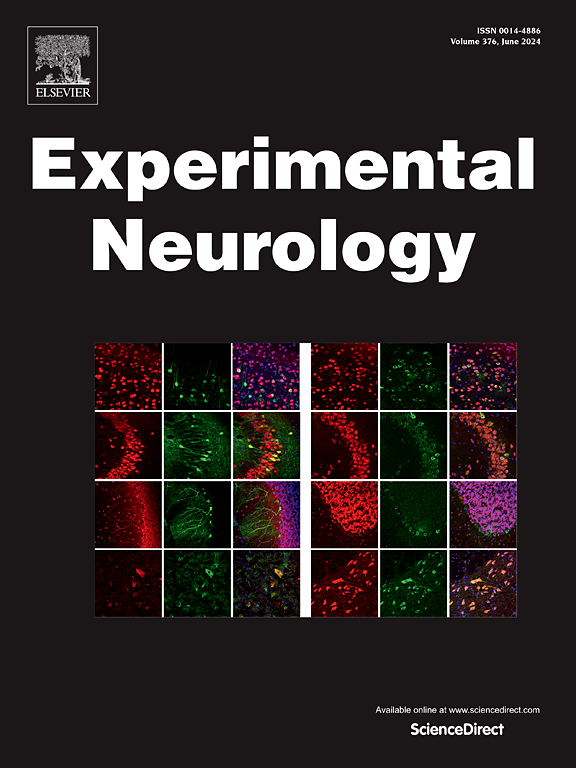Neuroprotection of celastrol against postoperative cognitive dysfunction through dampening cGAS-STING signaling
IF 4.6
2区 医学
Q1 NEUROSCIENCES
引用次数: 0
Abstract
Neuroinflammation is a central player in postoperative cognitive dysfunction (POCD), an intractable and highly confounding neurological complication with finite therapeutic options. Celastrol, a quinone methide triterpenoid, is a bioactive ingredient extracted from Tripterygium wilfordii with talented anti-inflammatory capacity. However, it is unclear whether celastrol can prevent anesthesia/surgery-evoked cognitive deficits in an inflammation-specific manner. The STING agonist 5,6-dimethylxanthenone-4-acetic acid (DMXAA) was used to determine whether celastrol possesses neuroprotection dependent on the STING pathway in vivo and in vitro. Isoflurane and laparotomy triggered cGAS-STING activation, caspase-3/GSDME-dependent pyroptosis, and enhanced Iba-1 immunoreactivity. Celastrol improved cognitive performance and decreased the levels of cGAS, 2′3′-cGAMP, STING, NF-κB phosphorylation, Iba-1, TNF-α, IL-6, and IFN-β. Downregulation of cleaved caspase-3 and N-GSDME was observed in the hippocampus of POCD mice and HT22 cells after celastrol administration, accompanied by limited secretion of pyroptosis-pertinent pro-inflammatory cytokines IL-1β and IL-18. DMXAA neutralized the favorable influences of celastrol on cognitive function, as confirmed by the activation of the STING/caspase-3/GSDME axis. These findings implicate celastrol as a therapeutic agent for POCD through anti-inflammation and anti-pyroptosis.
塞拉斯托通过抑制 cGAS-STING 信号对术后认知功能障碍的神经保护作用
神经炎症是导致术后认知功能障碍(POCD)的主要原因,而认知功能障碍是一种难以治愈且极易混淆的神经系统并发症,治疗方法有限。Celastrol 是一种醌甲甙三萜类化合物,是从威灵仙中提取的一种生物活性成分,具有很强的抗炎能力。然而,目前还不清楚塞拉斯托是否能以炎症特异性的方式预防麻醉/手术诱发的认知障碍。研究人员使用 STING 激动剂 5,6-二甲基氧杂蒽酮-4-乙酸(DMXAA)来确定青霉酚是否在体内和体外具有依赖于 STING 通路的神经保护作用。异氟醚和开腹手术引发了cGAS-STING激活、caspase-3/GSDME依赖性热凋亡和Iba-1免疫活性增强。塞拉斯托能改善认知能力,降低cGAS、2'3'-cGAMP、STING、NFκB磷酸化、Iba-1、TNFα、IL-6和IFN-β的水平。服用塞拉斯特罗后,在 POCD 小鼠的海马和 HT22 细胞中观察到了裂解的 Caspase-3 和 N-GSDME 的下调,同时还观察到了与热昏迷相关的促炎细胞因子 IL-1β 和 IL-18 的有限分泌。通过激活 STING/caspase-3/GSDME轴,DMXAA中和了塞拉斯托对认知功能的有利影响。这些研究结果表明,赛拉司醇可通过抗炎和抗突变作用成为 POCD 的治疗药物。
本文章由计算机程序翻译,如有差异,请以英文原文为准。
求助全文
约1分钟内获得全文
求助全文
来源期刊

Experimental Neurology
医学-神经科学
CiteScore
10.10
自引率
3.80%
发文量
258
审稿时长
42 days
期刊介绍:
Experimental Neurology, a Journal of Neuroscience Research, publishes original research in neuroscience with a particular emphasis on novel findings in neural development, regeneration, plasticity and transplantation. The journal has focused on research concerning basic mechanisms underlying neurological disorders.
 求助内容:
求助内容: 应助结果提醒方式:
应助结果提醒方式:


